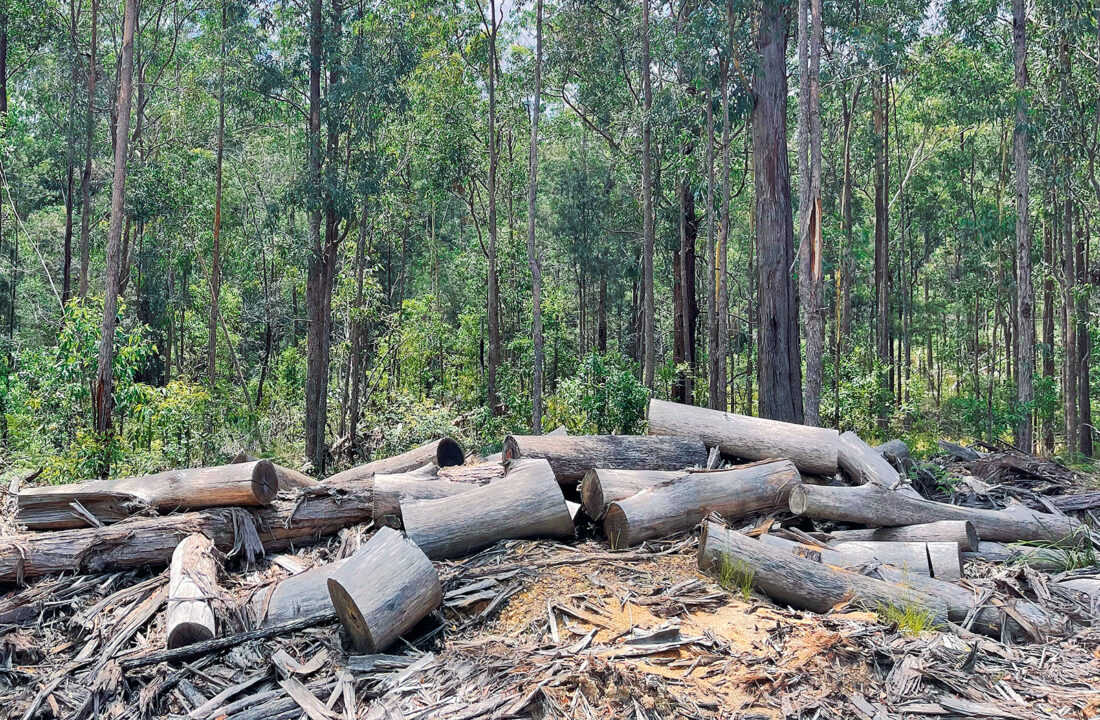
GREAT KOALA NATIONAL PARK
Pilfered as it’s planned: the rush to log a proposed national park in NSW.
Words: Meg Bauer, Wilderness Society
(This piece originally appeared in our Green Pages of Wild #190, Summer 2023)
The NSW government promised a park to save koalas from extinction, but won’t stop logging it in the meantime. Every year in NSW, around 14,000ha of native forest — home to an astounding array of globally unique plants and animals — is torn apart by logging. This is compounding the devastation wrought by the Black Summer Bushfires and is pushing some of Australia’s most iconic wildlife to the brink of extinction — including our eucalypt-munching marsupials.
“Thousands of hectares of forest within the proposed national park area could be demolished while planning takes place.”
The NSW Labor government has realised that something must be done to protect the state’s koalas from the biggest driver of their demise: habitat destruction. It has committed $80 million to deliver a new national park on the NSW Mid-North Coast to safeguard the precious tall forests that koalas, and other threatened species, desperately need to survive.
The problem, however, is this: The forests that could form part of the Great Koala National Park are being logged as planning for the park is underway. It’s terrible news for koalas, though, and all the other animals that live there. In fact, thousands of hectares of forest within the proposed national park area could be demolished while planning takes place. To date, the NSW government has only agreed to protect 5% of the future Great Koala National Park area from logging while the park is being established; meanwhile, it’s allowing the life to be logged out of some of the most important koala-habitat forests. And it’s not just koalas that are affected; it’s important habitat for many other species, some of them threatened, such as the rufous scrub-bird. The bird, perhaps the most ancient songbird on the planet, relies on moist rainforest floors; industrial logging, however, dries out forests. It consequently makes them more prone to fire, too.
This is emblematic of the wider issue of industrial native forest logging in Australia. Native-forest logging is a loss-making industry that costs tax-payers millions of dollars a year; it operates against scientific evidence, to the detriment of wildlife and often against the wishes of the community; and it increases Australia’s bushfire risk.
For koalas, the stakes are incredibly high. They’ll likely be extinct in the wild in NSW by 2050 if the forests they depend on continue to be flattened. That’s why the Wilderness Society is calling on the NSW Government to immediately suspend logging in the Great Koala National Park area, and to fast- track the proposal—for the good of so many species … including our own.
Find out more at wilderness.org.au/stopthechop
ON THE CHOPPING BLOCK:
Oakes State Forest — which lies within the proposed boundary of the Great Koala NP but is still set to be logged—is a strong- hold not only for koalas, but for other threatened species:
– Rufous scrub-birds: On the wet rainforest floor, these birds shelter and forage in the dense groundcover and deep leaf-litter.
– Glossy black cockatoos: These birds spend most of their day feeding in the native trees and shrubs.
– Greater gliders: The old-growth trees have hollows big enough for Austra- lia’s largest gliding possum to nest in.

